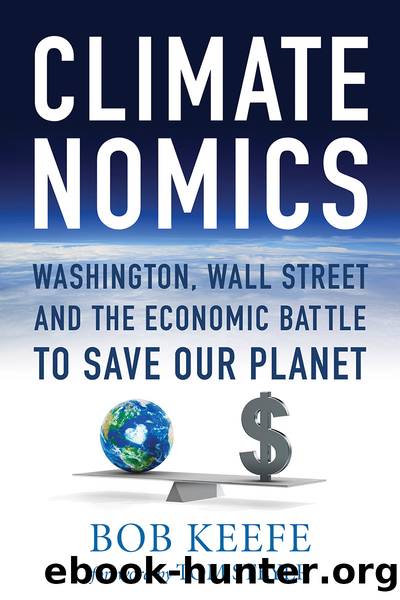Climatenomics by Bob Keefe

Author:Bob Keefe
Language: eng
Format: epub
Publisher: Rowman & Littlefield Publishers
Published: 2022-04-18T00:00:00+00:00
Chapter Nine
Markets, Signaled
Americaâs economy was on the verge of the biggest transition in its history. Progressives, seeing an urgent need to create jobs, make the nation more competitive in a growing international marketplace, and expand opportunities for more Americans, were proposing nothing less than to upend the very foundation of the countryâs economy. Doing so would effectively leave behind the industry that had almost single-handedly fueled Americaâs economic growth from its very beginning, and just as the economy was finally showing signs of stability. Understandably, the radical plan to totally reshape the American economy stoked outrage and worry that riled up politicians and the public alike.
The year was 1790, and leading the call to build back a better economy in America was the nationâs first treasury secretary, Alexander Hamilton.
Up until then, Americaâs economy was almost entirely agrarian. An estimated 90 percent of Americans lived and worked on farms (compared with about 1 percent in 2020). If you didnât live or work on a farm, you probably worked in a business that either supplied a farm or sold their products. The engine of the American economy was powered by cotton, tobacco, produce, and livestock.
At the Treasury Department, Hamilton saw a different future, one with a more diversified economy, with more job opportunities for more people (including women and children) and one that would attract badly needed foreign investments and workers to the young nation. So in 1791, at the request of Congress and with the encouragement of President George Washington, Hamilton penned âReport on the Subject of Manufactures,â a seminal economic proposal that at the time was as incendiary in the political and public discourse as a tweet might be from todayâs treasury secretary suggesting an end to the stock market.1 Hamiltonâs eighty-page proposal basically suggested that if the United States was going to be competitive and continue to grow, it needed to do more than just farm. He urged Congress to use the âincitement and patronage of governmentâ to help grow and nurture the nascent industry of manufacturing, for the betterment of the country and its economy. Back then, mass-production of goods with mechanized factories was as foreign and inconceivable as electric cars or glass panels that could make electricity from sun were a few decades ago. He proposed a series of âpecuniary bountiesâ and âpremiums,â subsidies that included tax incentives and government investments to encourage the growth of manufacturing for products such as coal, cotton, wool, sail cloth, and glass. Hamiltonâs âManufacturesâ also suggested the need for new policies to encourage immigration of skilled workers and provide training for others to expand job opportunities. To help pay for his sweeping economic plan, he proposed tariffs on imported finished goods.
Agricultural interests, led by powerful patrons Thomas Jefferson and James Madison, pushed back hard. Supporters of American agriculture lobbied the Congress to vote against Hamiltonâs proposals, citing everything from the sanctity of farming to the constitutionality of federal subsidies. Jefferson, a resolute champion of the virtues of American agriculture and a
Download
This site does not store any files on its server. We only index and link to content provided by other sites. Please contact the content providers to delete copyright contents if any and email us, we'll remove relevant links or contents immediately.
International Integration of the Brazilian Economy by Elias C. Grivoyannis(74623)
The Radium Girls by Kate Moore(11619)
Turbulence by E. J. Noyes(7700)
Nudge - Improving Decisions about Health, Wealth, and Happiness by Thaler Sunstein(7240)
The Black Swan by Nassim Nicholas Taleb(6762)
Rich Dad Poor Dad by Robert T. Kiyosaki(6174)
Pioneering Portfolio Management by David F. Swensen(6078)
Man-made Catastrophes and Risk Information Concealment by Dmitry Chernov & Didier Sornette(5645)
Zero to One by Peter Thiel(5488)
Secrecy World by Jake Bernstein(4388)
Millionaire: The Philanderer, Gambler, and Duelist Who Invented Modern Finance by Janet Gleeson(4092)
The Age of Surveillance Capitalism by Shoshana Zuboff(3983)
Skin in the Game by Nassim Nicholas Taleb(3965)
The Money Culture by Michael Lewis(3846)
Bullshit Jobs by David Graeber(3826)
Skin in the Game: Hidden Asymmetries in Daily Life by Nassim Nicholas Taleb(3720)
The Dhandho Investor by Mohnish Pabrai(3560)
The Wisdom of Finance by Mihir Desai(3523)
Blockchain Basics by Daniel Drescher(3327)
